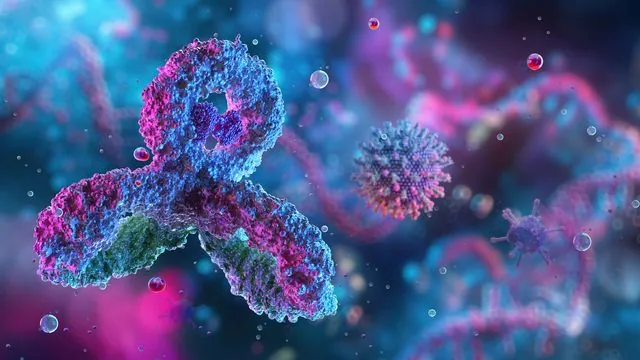
Unlocking the Secrets of Glycan Analysis in Therapeutic Glycoproteins
2025-07-14
Author: Rajesh
The Hidden Heroes of Proteins: Glycans
When we think about proteins, we often envision intricate chains of amino acids working tirelessly as molecular machines. However, lurking in the shadows of these biochemical marvels are carbohydrate side chains known as glycans. These sugar structures might be overlooked in traditional biology textbooks, but they wield considerable power over health and disease outcomes.
Take, for instance, the ABO blood group system: the difference between A, B, and O blood types hinges entirely on the terminal sugars on red blood cell glycoproteins. This seemingly small alteration can dictate whether a blood transfusion is compatible—illustrating just how impactful glycans can be.
What Exactly Are Glycans?
Glycans influence protein functionality in numerous ways; they can enhance, inhibit, or redirect protein actions. Modifications through glycosylation can vary a protein’s size, charge, and structural geometry, thereby affecting everything from enzyme stability to hormone receptor interactions. Unfortunately, the process of glycosylation remains poorly understood, primarily because it does not follow a predetermined template like DNA or protein synthesis.
With nearly every secreted or membrane-bound protein in humans sporting glycans, understanding these modifications has taken center stage in biopharmaceutical development. For instance, monoclonal antibodies—used in cancer therapies—rely on their protein-sugar combos to effectively rally immune responses, and therapeutic clotting factors depend on complex glycan branching to maintain their efficacy in circulation.
A Brief History of Glycans
The tale of glycans dates back to foundational moments in chemistry. Emil Fischer's 1891 research laid out the stereochemical framework of glucose, showcasing the diverse structure of sugars. Fast forward to Karl Landsteiner's 1901 discovery, which connected specific sugars on red blood cells to blood group compatibility—a discovery that had life-or-death implications.
In 1938, Hans Neuberger introduced the term glycoprotein, marking a pivotal shift in how we perceive these molecules. By recognizing that sugars attached to proteins were significant, the stage was set for enhanced drug design.
Understanding Glycan Structures
Mammalian cells utilize a finite selection of sugars like glucose and galactose to forge an impressive array of carbohydrate chains. Two primary types dominate therapeutic glycoproteins: N-linked and O-linked glycans, each attaching in their distinct ways.
N-linked glycans attach to asparagine side chains through a set consensus sequence, while O-linked glycans bind to serine or threonine residues within proteins. The complexity of these structures isn’t just aesthetic—it can significantly alter how proteins function and behave in the body.
Glycans and Disease: A Double-Edged Sword
Glycans are not merely passive components; they actively shape protein behavior, aiding in proper folding and protecting against degradation. However, in the face of disease, particularly in cancer, glycans can be exploited. Tumor cells often present with aberrant glycan patterns that enable them to 'hide' from immune detection, making glycan profiling crucial in developing targeted therapies.
What is Glycan Analysis?
Glycan analysis involves a suite of techniques aimed at characterizing carbohydrate chains attached to proteins—a critical step in ensuring the quality and efficacy of biopharmaceuticals. Techniques like high-performance liquid chromatography (HPLC) and mass spectrometry (MS) are essential for revealing the diversity of glycan structures.
The Future of Glycan Analysis in Biopharmaceuticals
As the demand for personalized medicine grows, so does the complexity and necessity for glycan profiling. A combination of methods is employed to elucidate glycan structures, pinpoint attachment sites, and gauge overall glycan composition. Each approach sheds light on different dimensions of glycosylation, underscoring the critical role these carbohydrates play in drug development.
As researchers delve deeper into the world of glycans, they'll continue to discover how to harness these sugar structures to craft more effective therapies, transforming the landscape of medicine and offering hope for countless patients.



 Brasil (PT)
Brasil (PT)
 Canada (EN)
Canada (EN)
 Chile (ES)
Chile (ES)
 Česko (CS)
Česko (CS)
 대한민국 (KO)
대한민국 (KO)
 España (ES)
España (ES)
 France (FR)
France (FR)
 Hong Kong (EN)
Hong Kong (EN)
 Italia (IT)
Italia (IT)
 日本 (JA)
日本 (JA)
 Magyarország (HU)
Magyarország (HU)
 Norge (NO)
Norge (NO)
 Polska (PL)
Polska (PL)
 Schweiz (DE)
Schweiz (DE)
 Singapore (EN)
Singapore (EN)
 Sverige (SV)
Sverige (SV)
 Suomi (FI)
Suomi (FI)
 Türkiye (TR)
Türkiye (TR)
 الإمارات العربية المتحدة (AR)
الإمارات العربية المتحدة (AR)